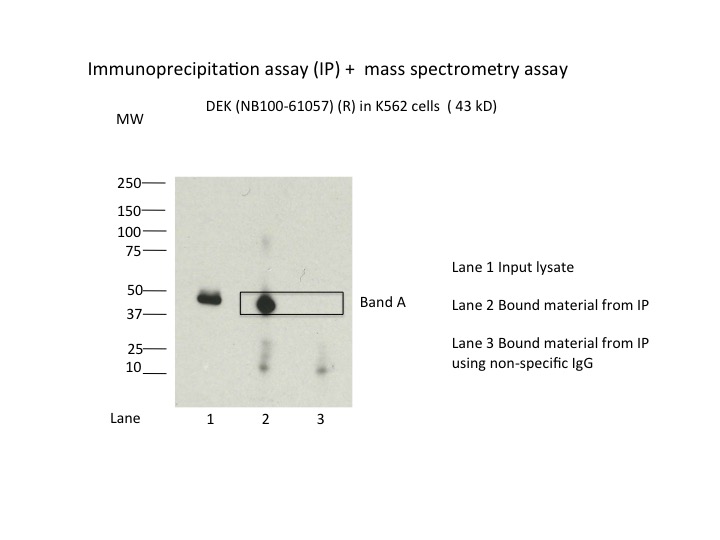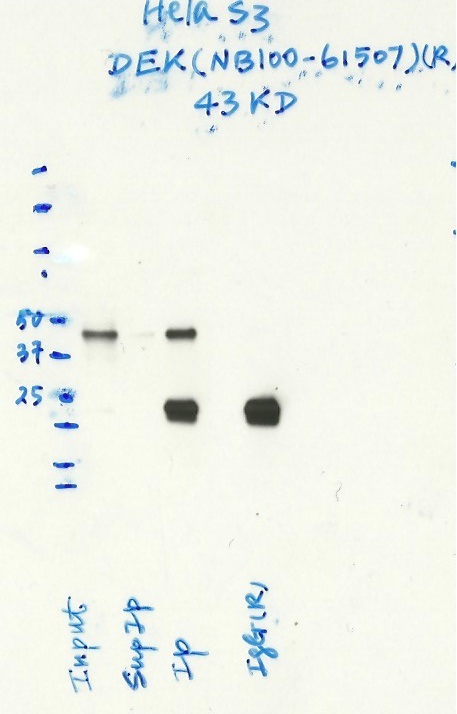ENCAB588PCU
Antibody against Homo sapiens DEK
Homo sapiens
HeLa-S3, K562
characterized to standards
- Status
- released
- Source (vendor)
- Novus
- Product ID
- NB100-61057
- Lot ID
- A1
- Characterized targets
- DEK (Homo sapiens)
- Host
- rabbit
- Aliases
- michael-snyder:DEK_NB100-61057_A1
- External resources
Characterizations
DEK (Homo sapiens)
K562
compliant
- Caption
- Immunoprecipitation of DEK from K562 cells using NB100-61057. Lane 1: input nuclear lysate. Lane 2: material immunoprecipitated with NB100-61057. Lane 3: material immunoprecipitated using control IgG. Band A was excised from gel and subject to analysis by mass spectrometry. The expected band size is 43 kDa.
- Submitted by
- Kathrina Onate
- Lab
- Michael Snyder, Stanford
- Grant
- U54HG006996
- Download
- 1004_DEK_NB100-61057.jpg
DEK (Homo sapiens)
HeLa-S3
compliant
- Caption
- Immunoprecipitation was performed on nuclear extracts from the cell line: HeLa-S3, using the antibody NB100-61057. The blot shows western blot analysis of input, flowthrough, immunoprecipitate and mock immunoprecipitate using IgG.Molecular Weight: 39.354
- Submitted by
- Nathaniel Watson
- Lab
- Michael Snyder, Stanford
- Grant
- U54HG006996
DEK (Homo sapiens)
Method: immunoprecipitation followed by mass spectrometry
compliant
- Caption
- IP followed by mass spectrometry: Briefly, protein was immunoprecipitated from K562 nuclear cell lysates using NB100-61057, and the IP fraction was loaded on a 10% polyacrylamide gel (NuPAGE Bis-Tris Gel) and separated with an Invitrogen NuPAGE electrophoresis system. The gel was stained by Colloidial Coomassie G-250 stain, gel fragments corresponding to the bands indicated were excised. Then proteins were trypsinized using the in-gel digestion method. Digested proteins were analyzed on an Orbitrap Elite mass spectrometer (Thermo Scientific) by the nanoLC-ESI-MS/MS technique. Peptides were identified by the SEQUEST algorithm and filtered with a high confidence threshold (Peptide false discovery rate < 1%, 2 unique peptides per protein minimum, mass error < 10 ppm).
- Submitted by
- Kathrina Onate
- Lab
- Michael Snyder, Stanford
- Grant
- U54HG006996
- Download
- DEK_NB100-61057_final DEK.pdf

